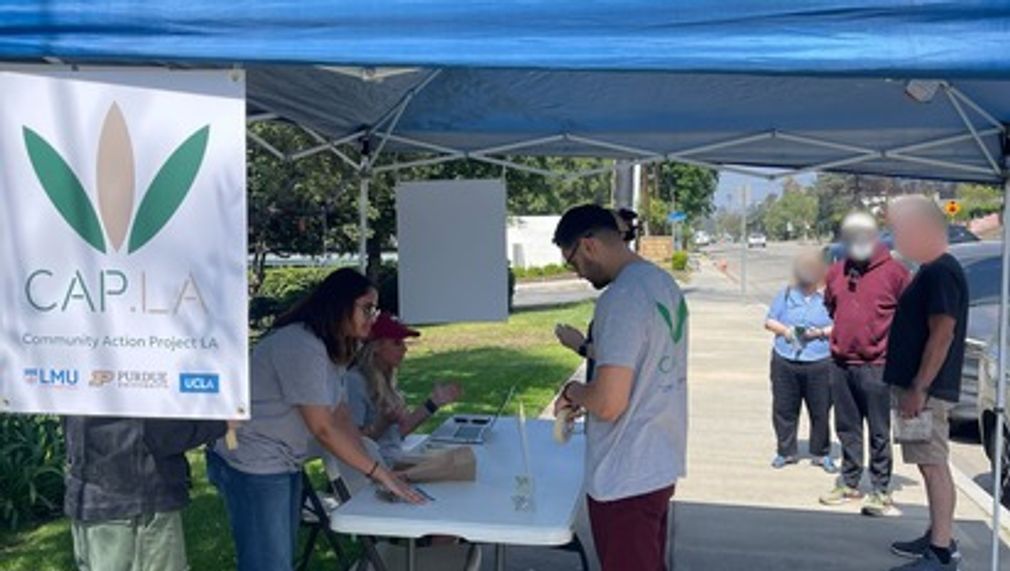Building an LA Wildfire Recovery Playbook
Los Angeles is caught in a wildfire Groundhog Day—each blaze reignites the same chaos. We're breaking the cycle with a Wildfire Recovery Playbook: a ready-to-deploy guide built from lived experience, not bureaucracy. From evacuation to rebuilding, it's the blueprint Angelenos need to act fast, not fumble. Let's stop improvising and start preparing.

What is the primary issue area that your application will impact?
Wildfire relief
In which areas of Los Angeles will you be directly working?
County of Los Angeles (select only if your project has a countywide benefit) San Gabriel Valley West LA San Fernando Valley City of Los Angeles (select only if your project has a citywide benefit)
In what stage of innovation is this project, program, or initiative?
Pilot or new project, program, or initiative (testing or implementing a new idea)
What is your understanding of the issue that you are seeking to address?
Los Angeles faces a recurring crisis with wildfires—especially urban wildfires—that leave communities scrambling with the same unanswered questions: Where do we go? Who do we call? How do we rebuild? How do we remediate? What are the post-fire environmental impacts I need to be worried about? Despite hard-earned lessons, each event feels like starting from scratch. There is no centralized, community-informed resource that residents, decision-makers, and service providers can turn to when the smoke clears. Our understanding is simple: recovery shouldn’t have to reinvent itself every time. We’re addressing this gap by capturing on-the-ground knowledge, community feedback, research, and best practices into a living, localized Wildfire Recovery Playbook that turns confusion into clarity—and chaos into coordination.
Describe the project, program, or initiative this grant will support to address the issue.
This grant will support the creation of the LA Wildfire Recovery Playbook—a community-centered, ready-to-use guide for what to do after the fire. Built from firsthand experience, survivor insight, scholarly research, and lessons learned from Los Angeles’ recent urban wildfires, the Playbook will serve as both a roadmap and a call to action.
We’re collecting insights from affected residents, experts, neighborhood leaders, frontline workers, and agencies to document what worked, what didn’t, and what we wish we’d had in place. From testing for soil, water, and air contamination to insurance pitfalls to mutual aid coordination—this Playbook will aim to cut across silos and provide practical steps for everyone: families, city departments, schools, utilities, and more.
The Playbook will cover practical, actionable steps—from relocation to rebuilding, how to deal with potential post-fire contaminants (e.g., air, soil, and water), renter protections to insurance navigation, pet care to power outages. It will offer a centralized, easy-to-use website that will include searchable tools and printable checklists.
Wildfires aren’t new, so recovering from them shouldn’t feel new each time. This project turns hindsight into a plan, empowering Los Angeles to meet the next wildfire with clarity, not confusion.
Describe how Los Angeles County will be different if your work is successful.
If our work is successful, Los Angeles County will no longer be stuck in reactive mode every time a wildfire starts. Residents throughout the entire county will know where to turn for answers, resources will be easier to access, and local agencies will coordinate more effectively. This living Playbook will become a go-to tool for recovery—shared in schools, neighborhood councils, city and county offices, and households. Over time, our vision is to adapt and readjust, adding in new research and lessons learned from future wildfires. Additionally, our long-term intention is that it can scale and be used in other wildfire-prone regions in California and nationwide, and be adaptable for others, accounting for their community input and real-time updates. Success means faster recoveries, fewer gaps in service delivery, and a stronger sense of readiness for everyone—from families to frontline workers. A more resilient Los Angeles starts with not being caught off guard.
Approximately how many people will be impacted by this project, program, or initiative?
Direct Impact: 5,000
Indirect Impact: 100,000